PL133-47 Fanout Buffer IC: Pinout, Equivalent and Datasheet
1 Circuit 2.5V 1:4 Clock Buffer DUAL PL133 8-SOIC (0.154, 3.90mm Width)
Unit Price: $1.577661
Ext Price: $1.58









1 Circuit 2.5V 1:4 Clock Buffer DUAL PL133 8-SOIC (0.154, 3.90mm Width)
The PL133-47 is an advanced fanout buffer design for high performance, low-power, small form factor applications. The PL133-47 accepts a reference clock input from DC to 150MHz and provides 4 outputs of the same frequency. Furthermore, Huge range of Semiconductors, Capacitors, Resistors and IcS in stock. Welcome RFQ.

Engineer It- How to measure additive jitter in fanout buffer
PL133-47 Pinout
The following figure is the diagram of PL133-47 Pinout.

Pinout
PL133-47 CAD Model
The following figure is the diagram of PL133-47 Footprint.
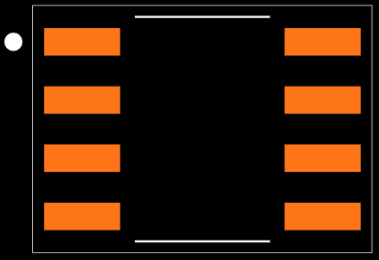
Footprint
PL133-47 Overview
The PL133-47 is an advanced fanout buffer design for high performance, low-power, small form factor applications. The PL133-47 accepts a reference clock input from DC to 150MHz and provides 4 outputs of the same frequency. The PL133-47 is offered in a SOP-8L package and it offers the best phase noise, additive jitter performance, and lowest power consumption of any comparable IC.
This article provides you with a basic overview of the PL133-47 Fanout Buffer IC, including its pin descriptions, features and specifications, etc., to help you quickly understand what PL133-47 is.
PL133-47 Features
● 1:4 LVCMOS output fanout buffer for DC to150MHz
● Low Additive Phase Jitter of 60fs RMS
● 8mA Output Drive Strength
● Low power consumption for portable applications
● Low input-output delay
● Output-Output skew less than 250ps
● 2.5V to 3.3V, ±10% operation
● Operating temperature range from -40°C to 85°C
● Available in 8-Pin SOP GREEN/RoHS package
Specifications
- TypeParameter
- Factory Lead Time6 Weeks
- Mount
In electronic components, the term "Mount" typically refers to the method or process of physically attaching or fixing a component onto a circuit board or other electronic device. This can involve soldering, adhesive bonding, or other techniques to secure the component in place. The mounting process is crucial for ensuring proper electrical connections and mechanical stability within the electronic system. Different components may have specific mounting requirements based on their size, shape, and function, and manufacturers provide guidelines for proper mounting procedures to ensure optimal performance and reliability of the electronic device.
Surface Mount - Mounting Type
The "Mounting Type" in electronic components refers to the method used to attach or connect a component to a circuit board or other substrate, such as through-hole, surface-mount, or panel mount.
Surface Mount - Package / Case
refers to the protective housing that encases an electronic component, providing mechanical support, electrical connections, and thermal management.
8-SOIC (0.154, 3.90mm Width) - Frequency(Max)150MHz
- Operating Temperature
The operating temperature is the range of ambient temperature within which a power supply, or any other electrical equipment, operate in. This ranges from a minimum operating temperature, to a peak or maximum operating temperature, outside which, the power supply may fail.
-40°C~85°C - Packaging
Semiconductor package is a carrier / shell used to contain and cover one or more semiconductor components or integrated circuits. The material of the shell can be metal, plastic, glass or ceramic.
Tube - Published2012
- JESD-609 Code
The "JESD-609 Code" in electronic components refers to a standardized marking code that indicates the lead-free solder composition and finish of electronic components for compliance with environmental regulations.
e3 - Part Status
Parts can have many statuses as they progress through the configuration, analysis, review, and approval stages.
Active - Moisture Sensitivity Level (MSL)
Moisture Sensitivity Level (MSL) is a standardized rating that indicates the susceptibility of electronic components, particularly semiconductors, to moisture-induced damage during storage and the soldering process, defining the allowable exposure time to ambient conditions before they require special handling or baking to prevent failures
3 (168 Hours) - Number of Terminations8
- TypeFanout Buffer (Distribution)
- Terminal Finish
Terminal Finish refers to the surface treatment applied to the terminals or leads of electronic components to enhance their performance and longevity. It can improve solderability, corrosion resistance, and overall reliability of the connection in electronic assemblies. Common finishes include nickel, gold, and tin, each possessing distinct properties suitable for various applications. The choice of terminal finish can significantly impact the durability and effectiveness of electronic devices.
Matte Tin (Sn) - annealed - Voltage - Supply
Voltage - Supply refers to the range of voltage levels that an electronic component or circuit is designed to operate with. It indicates the minimum and maximum supply voltage that can be applied for the device to function properly. Providing supply voltages outside this range can lead to malfunction, damage, or reduced performance. This parameter is critical for ensuring compatibility between different components in a circuit.
2.25V~3.63V - Terminal Position
In electronic components, the term "Terminal Position" refers to the physical location of the connection points on the component where external electrical connections can be made. These connection points, known as terminals, are typically used to attach wires, leads, or other components to the main body of the electronic component. The terminal position is important for ensuring proper connectivity and functionality of the component within a circuit. It is often specified in technical datasheets or component specifications to help designers and engineers understand how to properly integrate the component into their circuit designs.
DUAL - Terminal Form
Occurring at or forming the end of a series, succession, or the like; closing; concluding.
GULL WING - Number of Functions1
- Supply Voltage
Supply voltage refers to the electrical potential difference provided to an electronic component or circuit. It is crucial for the proper operation of devices, as it powers their functions and determines performance characteristics. The supply voltage must be within specified limits to ensure reliability and prevent damage to components. Different electronic devices have specific supply voltage requirements, which can vary widely depending on their design and intended application.
2.5V - Base Part Number
The "Base Part Number" (BPN) in electronic components serves a similar purpose to the "Base Product Number." It refers to the primary identifier for a component that captures the essential characteristics shared by a group of similar components. The BPN provides a fundamental way to reference a family or series of components without specifying all the variations and specific details.
PL133 - JESD-30 Code
JESD-30 Code refers to a standardized descriptive designation system established by JEDEC for semiconductor-device packages. This system provides a systematic method for generating designators that convey essential information about the package's physical characteristics, such as size and shape, which aids in component identification and selection. By using JESD-30 codes, manufacturers and engineers can ensure consistency and clarity in the specification of semiconductor packages across various applications and industries.
R-PDSO-G8 - Supply Voltage-Max (Vsup)
The parameter "Supply Voltage-Max (Vsup)" in electronic components refers to the maximum voltage that can be safely applied to the component without causing damage. It is an important specification to consider when designing or using electronic circuits to ensure the component operates within its safe operating limits. Exceeding the maximum supply voltage can lead to overheating, component failure, or even permanent damage. It is crucial to adhere to the specified maximum supply voltage to ensure the reliable and safe operation of the electronic component.
3.63V - Supply Voltage-Min (Vsup)
The parameter "Supply Voltage-Min (Vsup)" in electronic components refers to the minimum voltage level required for the component to operate within its specified performance range. This parameter indicates the lowest voltage that can be safely applied to the component without risking damage or malfunction. It is crucial to ensure that the supply voltage provided to the component meets or exceeds this minimum value to ensure proper functionality and reliability. Failure to adhere to the specified minimum supply voltage may result in erratic behavior, reduced performance, or even permanent damage to the component.
2.25V - Number of Circuits1
- Input
In electronic components, "Input" refers to the signal or data that is provided to a device or system for processing or manipulation. It is the information or command that is received by the component to initiate a specific function or operation. The input can come from various sources such as sensors, other electronic devices, or user interactions. It is crucial for the proper functioning of the component as it determines how the device will respond or behave based on the input received. Understanding and managing the input parameters is essential in designing and using electronic components effectively.
LVCMOS - Ratio - Input:Output
The parameter "Ratio - Input:Output" in electronic components refers to the relationship between the input and output quantities of a device or system. It is a measure of how the input signal or energy is transformed or converted into the output signal or energy. This ratio is often expressed as a numerical value or percentage, indicating the efficiency or effectiveness of the component in converting the input to the desired output. A higher ratio typically signifies better performance or higher efficiency, while a lower ratio may indicate losses or inefficiencies in the conversion process. Understanding and optimizing the input-output ratio is crucial in designing and evaluating electronic components for various applications.
1:4 - Differential - Input:Output
Differential - Input:Output refers to the relationship between the input and output signals in differential amplifiers or circuits. It measures the difference in voltage between two input terminals and produces an output that is proportional to this difference. This parameter is essential for noise rejection and improving signal integrity in various applications, such as operational amplifiers and data acquisition systems. It allows circuits to effectively amplify small signals while minimizing interference and common-mode noise.
No/No - Propagation Delay (tpd)
Propagation delay (tpd) is a crucial parameter in electronic components, especially in digital circuits. It refers to the time taken for a signal to travel from the input of a component to its output. This delay is caused by various factors such as the internal circuitry, interconnections, and the physical properties of the component. Propagation delay is essential to consider in designing circuits to ensure proper timing and functionality. It is typically measured in nanoseconds or picoseconds and plays a significant role in determining the overall performance and speed of electronic systems.
9.2 ns - Same Edge Skew-Max (tskwd)
The parameter "Same Edge Skew-Max (tskwd)" in electronic components refers to the maximum allowable difference in propagation delay between signals that are traveling along the same edge of a component, such as a flip-flop or a register. Skew refers to the timing misalignment between signals, and this parameter sets a limit on how much skew is acceptable for signals that are supposed to arrive at the same time. Exceeding this maximum skew value can lead to timing violations and affect the overall performance and reliability of the electronic system. Designers need to carefully consider and manage skew to ensure proper signal synchronization and timing integrity in their electronic designs.
0.25 ns - Number of True Outputs4
- Length4.9mm
- Width3.9mm
- RoHS Status
RoHS means “Restriction of Certain Hazardous Substances” in the “Hazardous Substances Directive” in electrical and electronic equipment.
ROHS3 Compliant
PL133-47 Functional Block Diagram
The following is the Block Diagram of PL133-47.
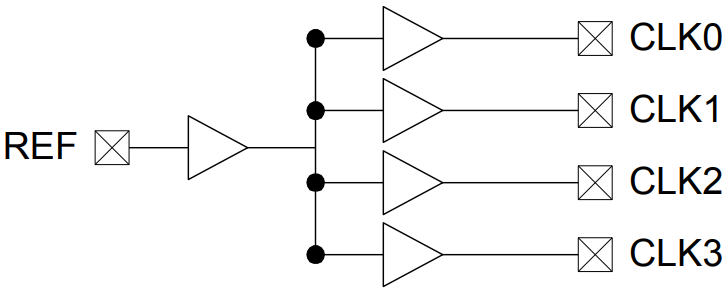
Block Diagram
PL133-47 Test Circuit
The following diagram shows the PL133-47 Test Circuit.
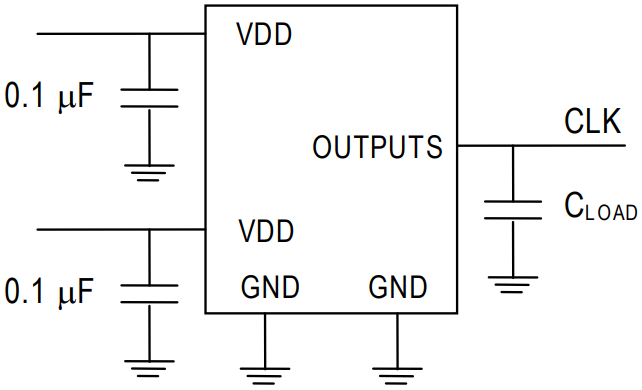
Test Circuit
PL133-47 Equivalent
| Model number | Manufacturer | Description |
| PL133-47SC-R | Microchip Technology Inc | PL133 SERIES, LOW SKEW CLOCK DRIVER, 4 TRUE OUTPUT(S), 0 INVERTED OUTPUT(S), PDSO8 |
| 2305NZT-1DCGI8 | Integrated Device Technology Inc | Low Skew Clock Driver, PDSO8 |
| 2305NZT-1DCG8 | Integrated Device Technology Inc | SOIC-8, Reel |
| 2305NZT-1DCG | Integrated Device Technology Inc | SOIC-8, Tube |
| PL133-47SC | Microchip Technology Inc | PL133 SERIES, LOW SKEW CLOCK DRIVER, 4 TRUE OUTPUT(S), 0 INVERTED OUTPUT(S), PDSO8 |
| 2305NZT-1DCGI | Integrated Device Technology Inc | Low Skew Clock Driver, PDSO8 |
Parts with Similar Specs
- ImagePart NumberManufacturerPackage / CaseNumber of CircuitsFrequency (Max)Supply VoltageNumber of TerminationsMountDifferential - Input:OutputRoHS StatusView Compare
PL133-47SI
8-SOIC (0.154, 3.90mm Width)
1
150MHz
2.5 V
8
Surface Mount
No/No
ROHS3 Compliant
8-SOIC (0.154, 3.90mm Width)
1
-
3.3 V
8
Surface Mount
No/No
ROHS3 Compliant
8-SOIC (0.154, 3.90mm Width)
1
134MHz
1.8 V
8
Surface Mount
No/No
ROHS3 Compliant
8-SOIC (0.154, 3.90mm Width)
1
134MHz
1.8 V
8
Surface Mount
No/No
ROHS3 Compliant
8-SOIC (0.154, 3.90mm Width)
1
-
3.3 V
8
Surface Mount
No/No
ROHS3 Compliant
PL133-47 Package
The following diagrams show the PL133-47 Package.
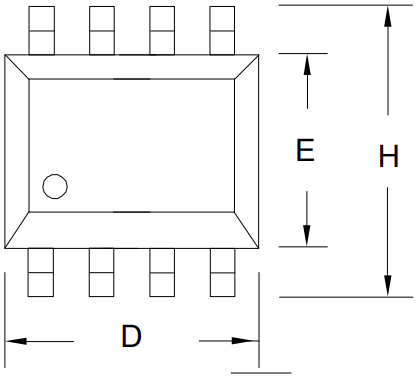
View A
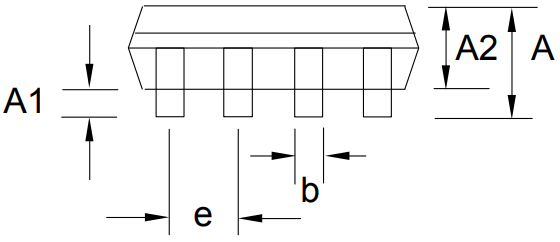
View B

View C
PL133-47 Manufacturer
Microchip Technology Inc. is a leading provider of microcontroller and analog semiconductors, providing low-risk product development, lower total system cost and faster time to market for thousands of diverse customer applications worldwide. Headquartered in Chandler, Arizona, Microchip offers outstanding technical support along with dependable delivery and quality.
Datasheet PDF
- Datasheets :
- PCN Packaging :
- ConflictMineralStatement :
How many pins of PL133-47SI?
8 Pins.
What’s the operating temperature of PL133-47SI?
-40°C~85°C.
What is the essential property of the PL133-47?
The PL133-47 is an advanced fanout buffer design for high performance, low-power, small form factor applications. The PL133-47 accepts a reference clock input from DC to 150MHz and provides 4 outputs of the same frequency.
 Understanding the STM32H750VBT6 Microcontroller
Understanding the STM32H750VBT6 Microcontroller24 July 2025575
![UC3845 PWM Controller: Circuit, Pinout, and Datasheet [Video&FAQ]](https://res.utmel.com/Images/Article/904c8322-12f5-4ead-b3e3-56d0ee08b457.png) UC3845 PWM Controller: Circuit, Pinout, and Datasheet [Video&FAQ]
UC3845 PWM Controller: Circuit, Pinout, and Datasheet [Video&FAQ]09 October 202152766
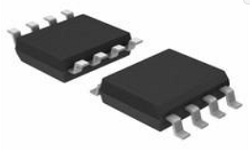 W25Q16JVSSIQ IC: Features, Applications and Datasheet
W25Q16JVSSIQ IC: Features, Applications and Datasheet16 November 2023513
![ATTINY84A-PU AVR series Microcontroller IC 8-Bit 20MHz[FAQ]: Datasheet, Features, and Pinout](https://res.utmel.com/Images/Article/889533d0-63dd-4ec6-8d21-6b346255db18.jpg) ATTINY84A-PU AVR series Microcontroller IC 8-Bit 20MHz[FAQ]: Datasheet, Features, and Pinout
ATTINY84A-PU AVR series Microcontroller IC 8-Bit 20MHz[FAQ]: Datasheet, Features, and Pinout18 March 2022580
 Advantech Corp 96MPXE-2.6-19M36: A Comprehensive Guide to the Discontinued Skylake Microprocessor Module
Advantech Corp 96MPXE-2.6-19M36: A Comprehensive Guide to the Discontinued Skylake Microprocessor Module07 March 2024455
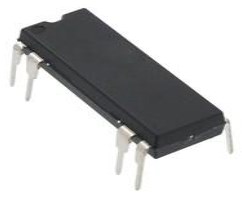 ISO124 Isolation Amplifiers:Pinout, Price and Datasheet PDF
ISO124 Isolation Amplifiers:Pinout, Price and Datasheet PDF28 June 20215250
 SI5351B-B I²C Clock Generator: Pinout, Features and Datasheet
SI5351B-B I²C Clock Generator: Pinout, Features and Datasheet22 December 20211894
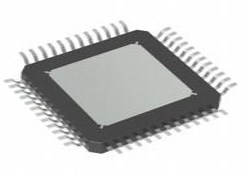 TMC2130 Driver IC: Datasheet, Pinout and Application
TMC2130 Driver IC: Datasheet, Pinout and Application01 September 20212374
 Semiconductor Material Industry Guide
Semiconductor Material Industry Guide21 January 20224745
 EMI Filter: Introduction, Functions and Applications
EMI Filter: Introduction, Functions and Applications23 December 202011247
 Gartner: Hysis Revenue Plunges 81%, Samsung Holds on to Semiconductor Leadership
Gartner: Hysis Revenue Plunges 81%, Samsung Holds on to Semiconductor Leadership15 April 2022732
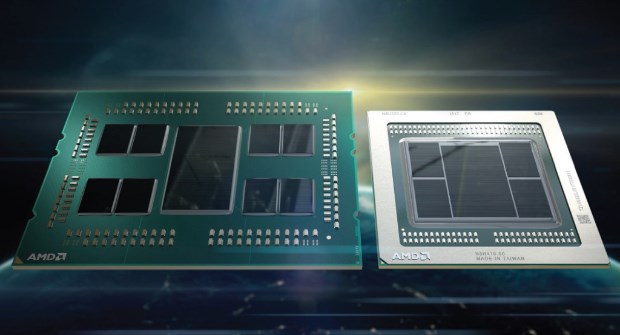 Chiplet Brings Change to the Business Model of IP Design Companies
Chiplet Brings Change to the Business Model of IP Design Companies05 September 20222619
 Electric Car Rechargeable Batteries: How Long Do They Last?
Electric Car Rechargeable Batteries: How Long Do They Last?13 April 20233628
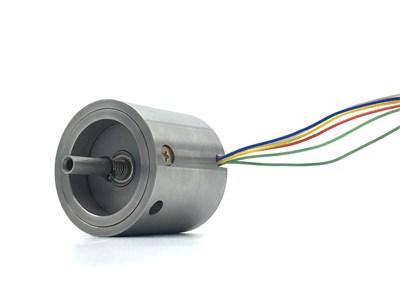 RVDT(Rotary Variable Differential Transformer) Basics
RVDT(Rotary Variable Differential Transformer) Basics02 February 202116865
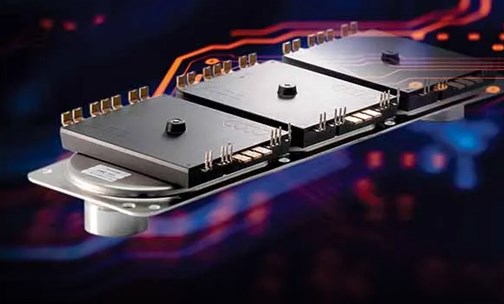 Optimizations and applications of wide-band gap (wbg) semiconductor devices for ev systems
Optimizations and applications of wide-band gap (wbg) semiconductor devices for ev systems28 October 20221955
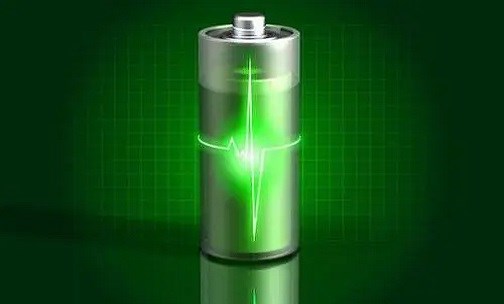 4680 Battery - Upgrade of Battery Technology
4680 Battery - Upgrade of Battery Technology17 December 20215209
Microchip Technology
In Stock: 13
Minimum: 1 Multiples: 1
Qty
Unit Price
Ext Price
1
$1.577661
$1.58
10
$1.488359
$14.88
100
$1.404113
$140.41
500
$1.324635
$662.32
1000
$1.249655
$1,249.66
Not the price you want? Send RFQ Now and we'll contact you ASAP.
Inquire for More Quantity







